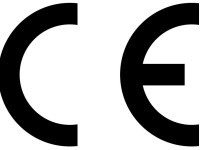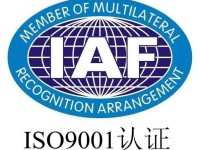Forged fittings
-

Threaded Fittings NPT Forged Fittings 1/2″
Threaded connection is a way to thread the tee joint and the pipe together.
This connection method needs to open a threaded hole at the interface between the three-way pipe joint and the pipeline,
and then screw the threaded connector into the hole to make it tightly connected to the pipeline.
The advantage of threaded connection is that it is easy to install, easy to disassemble and replace,
and is suitable for low pressure, low temperature and non-corrosive media.
Application : used for chemical industry , oil ,gas industry etc.
-

Carbon Steel Socket Weld Fittings Customize
Tee also known as pipe fittings tee or tee pipe fittings, tee joint, etc. Used mainly to change the direction of the fluid, used in the main pipe branch. It can be classified by pipe size. Generally used carbon steel, cast steel, alloy steel, stainless steel, etc
Application : used for chemical industry , oil ,gas industry etc.
-

150lbs Stainless Steel NPT/Bsp/DIN Male Female Threaded Pipe Fittings
Live joint (union), also called Youren or Youren, is a common pipe connection that can be easily installed and disassembled. It mainly consists of three parts: nut, cloud head and flat joint. The varieties of spigot joints are equal diameter and reduced diameter. The live joint is mainly composed of nut, cloud head and flat joint. Pipe connectors machined after die forging of round steel or steel ingot are connected by socket welding and threaded connection. Socket welding is to insert steel pipes into socket holes for welding.
Application : used for chemical industry , oil ,gas industry etc.
-

150# cast ss fittings with thread
The threaded joint refers to the pipe connector with thread, is the most common kind of pipe fittings in industry and life, the threaded joint makes the connection of the pipe more simple, disassembly and replacement is also easier, greatly saving the cost of pipe connection.
Application : used for chemical industry , oil ,gas industry etc.
-
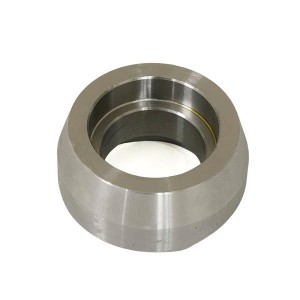
Outlet Fittings ASME Socket Weld Fittings
The body of the branch pipe is made of high-quality forgings, made of the same material as the pipe, including carbon steel, alloy steel, stainless steel, etc. The branch pipe seat and the main pipe are welded, and the connection with the branch pipe or other pipes (such as short pipe, wire plug, etc.), instrument, valve has three types of butt welding connection, socket welding connection, thread connection. The common manufacturing standards of the branch management table are MSS SP-97, GB/T19326 and other standards.
Application : used for chemical industry , oil ,gas industry etc.
-
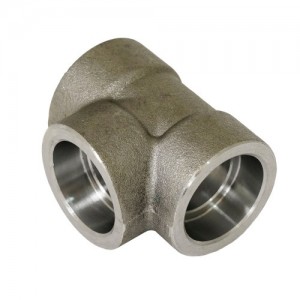
Forged Fittings Socket Weld Fittings Coupling Elbow Tee
Forged fittings are fittings manufactured using a forging process in which solid metal is shaped by heat and pressure.
These fittings are usually made of materials such as carbon steel, stainless steel or alloy steel. Forged fittings offer several advantages over other types of fittings,
including greater strength, greater corrosion resistance, and better durability. They are typically used in applications where high pressures,
high temperatures or harsh operating conditions exist, such as in the oil and gas, chemical and petrochemical industries.
-
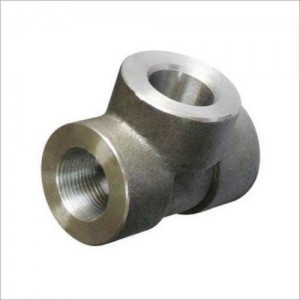
Threaded Equal Tee Forged Fittings 150LB
A threaded equal tee is a pipe fitting that allows three pipes of the same diameter to be connected in a pipe or piping system.
All three of its openings have internal threads, making it suitable for threaded connections. Equilateral tees are designed in a “T” shape,
with each opening perpendicular to the other two. This allows fluid or gas to flow in three directions simultaneously. Threaded design allows for
easy installation and removal without additional tools. Equal tees are typically constructed of materials such as stainless steel, brass, or PVC,
depending on the application and system requirements.
-
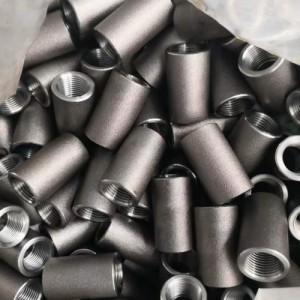
6000 PSI Female Coupling
Threaded coupling refers to a type of mechanical connection between two components using threads.
Threads are helical grooves around a cylindrical object that allow for a secure and tight connection when twisted together.
In engineering and manufacturing, threaded coupling is commonly used to connect pipes, fittings, fasteners,
and other components in various applications. The threaded connection typically consists of a male component
with external threads and a female component with internal threads that mesh together when twisted.
Some common types of threaded coupling include:
NPT (National Pipe Thread): Standard tapered threads used for connecting pipes and fittings in plumbing and industrial applications.
Metric Threads: Standard threads used in metric units for connecting components in automotive, machinery, and equipment manufacturing.
Unified Thread Standard (UTS): Thread system commonly used in North America for various applications, including fasteners, nuts, and bolts.
Threaded coupling offers several advantages, including ease of assembly, reusability, and secure connections that are resistant to
vibration and shock. However, proper alignment and tightening are crucial to ensure a leak-free and durable joint. Additionally,
threaded coupling may require regular maintenance and inspection to prevent loosening or degradation over time.

